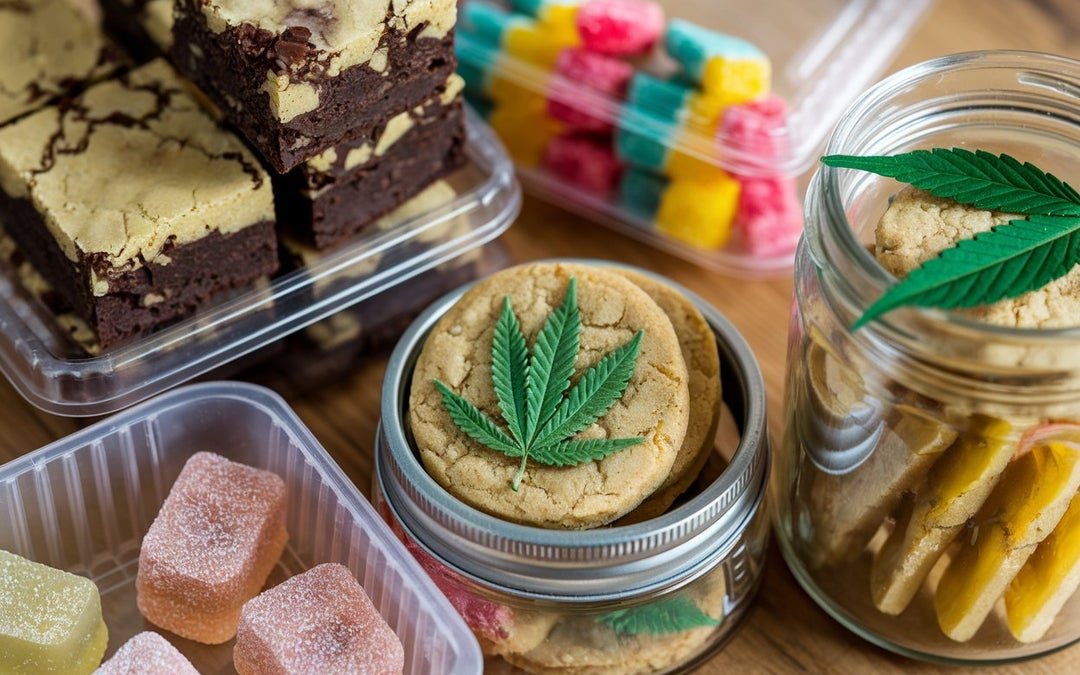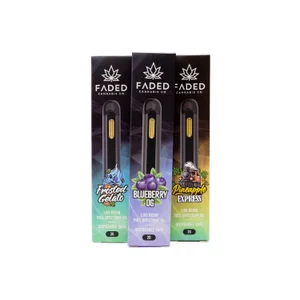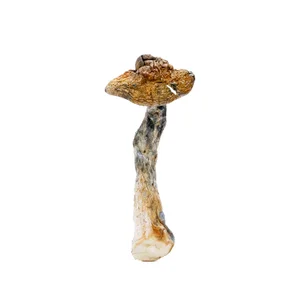Decarb Cannabis – The What & The Why
If you’re into cannabis products or you just want to start producing something of your own, then cannabis decarboxylation is one of the critical steps when it comes to creating the best outcome possible. The raw cannabis plant contains precursor compounds like THCA and CBDA, which need to be converted through decarboxylation. If you aren’t familiar with it, hopefully, this article will help you understand the process a bit better and see why it’s so essential for quality cannabis products. You’ll learn everything there is about decarboxylation (but in simple words), and as a plus, you’ll get simple step-by-step instructions if you wish to try out this process for yourself.
So, without further ado, let’s dive into this nitpicky process, which will make every single cannabis product a bit more lasting and more effective as well.
What Does It Mean To Decarb Cannabis?
In a nutshell, decarboxylation is a process that makes cannabis edibles more potent. To achieve this, you need to decarboxylate cannabis by heating cannabis, which is necessary to activate cannabinoids like THCA and CBDA into their more potent forms, THC and CBD. This chemical reaction is one of the crucial steps you need to take if you want your edibles to be more safe, effective and generally approved by head organizations. Edibles that you see nowadays which you can buy from reputable sellers are 99% decarbed, and thus, if you want to create the right product, this is something you shouldn’t even think of avoiding.
Wait…What?
If this was something that was too much for your brain, don’t worry, we’ll break it down even more. THCA is something that you’ll find in most cannabis-based products before their consumption and generally before smoking. The raw cannabis plant contains acidic forms of cannabinoids like THCA and CBDA, which need to be activated through decarboxylation. Now, when you smoke cannabis, the heat makes THCA transfer from one state to another and thus, what you’re left with is psychoactive THC – something we all love. This process is simple when you smoke or just heat your products.
We won’t get into the chemical stuff that occurs in the background of the process, but in simple words, this transfer from THCA to THC makes cannabis more potent, and you’ll have a high kick – which is good. Now, when it comes to edibles, it’s a whole other story. Edibles are, well, edibles and thus you eat them to get the benefits from the specific product. This means that the product isn’t being heated, isn’t smoked and generally doesn’t change form. So, how does it become potent and transfer from THCA to THC?
That’s where the decarboxylation process comes in handy.
Decarboxylating cannabis is the first process you need to take if you want your edibles to become a real thing and not just something that’s stuffed with some “plants” that won’t give you any effects. And don’t worry. While we know that the word “decarboxylation” doesn’t sound like it’s going to be your best friend and like it’s a nerd, the process of it happening is quite simple, and you can do it in your own home. Of course, as we showed in the example of smoking cannabis products, you need to apply some kind of heat to your edibles for decarboxylation to take place.
Let’s see what are some of the most critical steps in the process itself and what tools you need if you want to keep it clean and precise.
Preparing Cannabis for Decarboxylation
Preparing cannabis for decarboxylation is a crucial step to ensure the best results. Here are some tips to help you prepare your cannabis:
First, choose high-quality AAAA cannabis buds or flowers that are fresh and have not been exposed to heat or light. Fresh cannabis ensures that you start with the best possible material, which will lead to better results in the end.
Next, remove any stems or seeds from the cannabis buds. These parts of the plant can affect the decarboxylation process and may not provide the desired effects. By removing them, you ensure a more consistent and potent final product.
Once you have your clean cannabis buds, grind them into a coarse consistency. This increases the surface area, allowing for even decarboxylation. A coarse grind is ideal because it ensures that the heat can penetrate all parts of the cannabis evenly.
If you’re using a cannabis grinder, make sure to clean it regularly. Residual cannabis from previous uses can affect the decarboxylation process and the quality of your final product. A clean grinder ensures that you get the most out of your cannabis buds every time.
Guide on How To Decarb Cannabis
There are a lot of methods that you can use for decarbing weed to make decarboxylation occur and here, we’ll cover some of the basic ones. Of course, cannabis lovers around the world are very innovative, so nowadays, what we have is probably more than a dozen different methods that you can use. Still, some of them aren’t convenient and tested enough. That’s why we’ll stick to the basics and see what methods are being used the most by professionals.
Natural way to decarb cannabis flower
Since cannabis is natural, it has its way of decarboxylation, of course. Plants, in general, don’t need humans to undergo a specific process, and this applies to cannabis as well. A weed that sits long enough will get decarbed on its own, resulting in cured cannabis with a stronger smell and desirable characteristics compared to its raw form. Now, let’s just put a disclaimer here. When we say a long time – we mean it. If you opt for this natural method, prepare to grow a bit older until it finishes. We’re speaking about something in the ballpark of 1 year to 3 years, depending on the specific plant you have. And yet again, even if you wait that long and want to use the weed for your edibles, you still might not get its full potential as the process isn’t near finishing.
So, if you ask us, this method is worth mentioning, but you’ll probably end up using another one just because it’s more convenient. Of course, letting nature take its time and doing its thing is incredible, but sometimes you just don’t have a few years to waste.
Baking sheet
This method is probably the most popular one as anyone can do it. It’s no different than if you’re trying to bake a cake, and as a plus, most people have everything needed for the procedure in their own homes. For the baking sheet method, you need weed that you want to bake, a baking sheet where you’ll place the pot and an oven. That’s about it. The idea is pretty self-explanatory.
You set the weed on your baking sheet and put it inside the oven. Then, you bake it for 30 minutes at 250 degrees Celsius, and decarboxylation will occur. You won’t be waiting for a few years as you would in a natural method, so you get why most people just opt for the baking sheet way of decarboxylation. What you’ll end up with is a sweet-looking, brownish weed that will be decarbed and ready for further processing. One thing though – it’s going to get smelly, and you shouldn’t do this if your parents or neighbours are around. They’ll probably notice the smell.
Oven Bag
The oven bag is the same as the baking sheet method but even more convenient. In this method, you’re using a bag, which makes things much more straightforward. You just put the weed inside the bag, bake it, and when it’s done, you just empty the bag wherever you like. You’ll have way less cleaning to do, and you won’t need to collect your precious plants one by one as you would in the baking sheet method.
Sous Vide Method
The sous vide method is a precise and efficient way to decarboxylate cannabis. This method involves sealing the cannabis in a vacuum-sealed bag and immersing it in a temperature-controlled water bath. The sous vide method allows for precise temperature control, which is essential for preserving the potency of cannabinoids and terpenes.
To decarboxylate cannabis using the sous vide method, follow these steps:
- Preheat the water bath to the desired temperature (usually between 200°F and 220°F).
- Place the cannabis in a vacuum-sealed bag, making sure to remove as much air as possible.
- Seal the bag and place it in the water bath.
- Set the timer according to the desired decarboxylation time (usually between 30 minutes to 1 hour).
- Once the decarboxylation process is complete, remove the bag from the water bath and let it cool.
The sous vide method is a great way to decarboxylate cannabis, as it allows for precise temperature control and minimal loss of cannabinoids and terpenes. This method ensures that your cannabis material is evenly heated, resulting in a consistent and potent final product.
Mason Jar Method
The mason jar method is a simple and effective way to decarboxylate cannabis. This method involves placing the cannabis in a mason jar, sealing it, and heating it in the oven.
To decarboxylate cannabis using the mason jar method, follow these steps:
- Preheat the oven to the desired temperature (usually between 220°F and 240°F).
- Place the cannabis in a mason jar, making sure to leave some space at the top.
- Seal the jar and place it in the oven.
- Set the timer according to the desired decarboxylation time (usually between 30 minutes to 1 hour).
- Once the decarboxylation process is complete, remove the jar from the oven and let it cool.
The mason jar method is a great way to decarboxylate cannabis, as it allows for easy temperature control and minimal loss of cannabinoids and terpenes. This method also helps to contain the smell, making it a more discreet option for decarbing weed at home.
Decarboxylation Temperature and Time
Decarboxylation temperature and time are critical factors that can affect the quality and potency of your decarboxylated cannabis. Here are some guidelines to help you get the best results:
Temperature: The ideal temperature for decarboxylation is between 220°F to 245°F (104°C to 118°C). This temperature range allows for the optimal conversion of THCA to THC and CBDA to CBD. Staying within this range ensures that you preserve the cannabinoids and terpenes, which contribute to the overall effects and flavour of your cannabis.
Time: The decarboxylation time can vary depending on the temperature and the type of cannabis you’re using. Generally, it can take anywhere from 25 to 45 minutes to decarb weed. Here’s a rough guide to help you estimate the decarboxylation time:
- 220°F (104°C): 30-40 minutes
- 230°F (110°C): 25-35 minutes
- 240°F (115°C): 20-30 minutes
- 245°F (118°C): 15-25 minutes
By following these temperature and time guidelines, you can ensure that your cannabis is properly decarboxylated, maximizing its potency and effectiveness.
What Happens If You Decarboxylate Too Long?
Decarboxylating cannabis for too long can lead to the degradation of cannabinoids and terpenes. This can result in a less potent final product and a less desirable flavour and aroma.
To avoid over-decarboxylation, it’s essential to monitor the temperature and time of the decarboxylation process. The ideal decarboxylation time and temperature will vary depending on the specific cannabis material and the desired final product.
In general, it’s recommended to decarboxylate cannabis for 30 minutes to 1 hour at a temperature of 220°F to 240°F. However, this time and temperature may need to be adjusted based on the specific cannabis material and the desired final product. By keeping a close eye on the decarboxylation process, you can ensure that your cannabis is properly decarboxylated without losing its potency and effectiveness.
Using Decarbed Weed
Decarbed weed can be used in a variety of ways to make cannabis-infused products. Here are some ideas to get you started:
Make cannabis-infused oils: Decarbed weed can be used to make cannabis-infused oils that can be used in cooking or as a topical treatment. These oils are versatile and can be incorporated into a wide range of recipes, from savoury dishes to sweet treats.
Create cannabis edibles: Decarbed weed can be used to make a variety of cannabis edibles, such as brownies, cookies, and candies. Edibles are a popular way to consume cannabis, offering a discreet and tasty option for enjoying its effects.
Make cannabis tinctures: Decarbed weed can be used to make cannabis tinctures that can be used sublingually or added to food and drinks. Tinctures are easy to dose and can be a convenient way to consume cannabis, especially for those who prefer not to smoke or vape.
Use in topicals: Decarbed weed can be used to make cannabis topicals, such as creams, balms, and salves, that can be used to relieve pain and inflammation. Topicals are applied directly to the skin and can provide localized relief without the psychoactive effects of THC.
Remember to always follow proper safety precautions when handling decarbed weed, and start with low doses to ensure the best results. Experimenting with different cannabis-infused products can be a fun and rewarding experience, so don’t be afraid to get creative and try new things!
Tips for Working with Decarbed Weed
Working with decarbed weed requires some care and attention to detail. Here are some tips to keep in mind:
- Store decarbed weed in an airtight container to preserve its potency and flavour.
- Use decarbed weed within a few days of decarboxylation for optimal potency and flavour.
- When making edibles, use a small amount of decarbed weed to start, as the potency can be unpredictable.
- When making cannabis-infused oils, use a high-quality oil that is suitable for cooking and consumption.
- Always follow proper safety protocols when working with cannabis, including wearing gloves and working in a well-ventilated area.
By following these tips, you can ensure that your decarbed weed is safe, potent, and effective. Proper handling and storage of decarbed weed will help you get the most out of your cannabis material, whether you’re making edibles, oils, or other cannabis-infused products.
Decarboxylation and Cannabinoids
Decarboxylation is a critical step in activating the cannabinoids in cannabis. Cannabinoids are the active compounds in cannabis that are responsible for its medicinal and psychoactive effects.
The two main cannabinoids in cannabis are THC (tetrahydrocannabinol) and CBD (cannabidiol). THC is the primary psychoactive compound in cannabis, while CBD is non-psychoactive and has a range of medicinal benefits.
Decarboxylation converts the acidic forms of these cannabinoids (THCA and CBDA) into their active forms (THC and CBD). This process is essential for making cannabis-infused products, including edibles, oils, and tinctures.
By understanding the decarboxylation process and its role in activating cannabinoids, you can create potent and effective cannabis products that meet your needs and preferences. Proper decarboxylation ensures that your cannabis material reaches its full potential, providing you with the desired effects and benefits.
Don’t Forget About the Decarboxylation Temperature Chart
Decarboxylate weed is an essential step that shouldn’t be neglected if you want to create quality edibles. Even if you don’t have a professional lab for this, you can do it in the comfort of your own home, as most people do. This article hopefully helped you see what different methods you can use to make the decarb process a piece of cake.
Also Check Out: How to Smoke Shatter – 4 Best Ways





